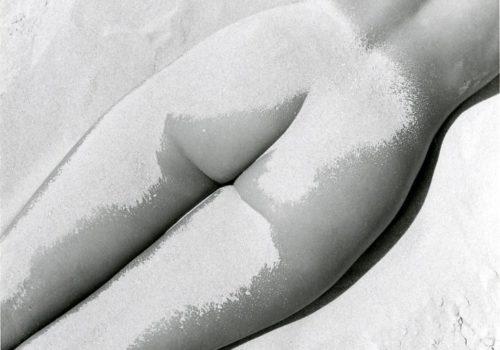Deborah Bell Photographs presents the exhibition Fernand Fonssagrives – Photographs 1930s-1950s.
Fernand Fonssagrives (1910-2003) was one of the most successful and highly paid fashion photographers of the 1940s and 1950s. His photographs were widely published in the editorial pages of Town & Country, Vogue, Glamour, Mademoiselle, Harper’s Bazaar, and Esquire, where his pictures for Bergdorf Goodman also appeared regularly in the advertising pages.
This exhibition will concentrate on the photographs Fonssagrives made in Europe and New York during the formative years of his career, from the 1930s into the 1950s, emphasizing the free-spirited life and working partnership he had with the Swedish-born dancer Lisa Bernstone, to whom he was married from 1935-1950. Their unique collaboration as model and photographer created the foundation for what became remarkable individual careers for each of them.
Born Fernand Vigoureaux near Paris in 1910 to a sculptor father and a musician mother, his parents encouraged the young Fonssagrives to do the things he loved most: science, art, sports, gymnastics and dance. After his parents divorced when he was 12, Fernand began to use his mother’s maiden name as his surname. He moved to the United States at the age of 18 to continue his dance studies, and returned to Europe in 1931 at the age of 21. In 1934 Fernand met Lisa, also a dancer, who was studying in Paris. Fernand and Lisa married in 1935, performed with different companies, and worked together as dance instructors. Fernand’s career was abruptly ended, however, when he injured his leg badly in
a diving accident. During his lengthy recuperation Lisa gave him a Rolleiflex, and his career as a photographer was born. As Fernand said later, “it was my first serious camera, and it became a part of my body.” Long before assignments from art directors became the norm, Fonssagrives sold his pictures to magazines throughout Europe such as Jeunesse d’Aujourd’hui. As Lisa explained to the photographer David Seidner decades later, “In those days, a picture didn’t have to be assigned to be published; if it was beautiful, the magazines would run it.”
Martin Harrison describes this period of magazine photography in David Seidner’s book, Lisa Fonssagrives: Three Decades of Classic Fashion Photography (1996):
When Fernand Fonssagrives began to photograph Lisa in 1934 it was in the leaping, super- athletic stances that characterized an important aspect of the avant-garde. The cult of the dynamic body appropriated by fashion photography in the 1930s was founded on an amalgam of diverse cultural references, from Diaghilev and Futurism…and the Neue Sachlichkeit. Women were portrayed in magazines as symbols of the urgent pace of change in modern life; movement, speed and modernity were assumed to be synonymous. Lisa’s inherent grace and athleticism, intensified by her training as a dancer, were attributes which Fonssagrives was able to exploit in syndicating photographs of her to the many European magazines which specifically catered to the new passion for health, action and beauty.
They met with immediate success and the couple set out to tour Europe, working their way as an itinerant photographer and model team. ‘Fernand was charming, great fun — we were like children in those years,’ recalled Lisa, ‘there was dancing, the excitement of new ski-jumps, swimming — play really, which would become part of being a model.’ In their Hansel and Gretel-like existence they camped out under the open skies and at one point constructed a beach-house on Noirmoutier, an island off the Atlantic coast of France, all the time moving…from place to place, selling photographs to magazines as they went. When in Paris the Fonssagrives continued to give private dancing lessons in people’s homes.
Although Fernand continued to photograph for fashion magazines and advertisers into the early 1960s, as the fashion-magazine industry burgeoned he found himself increasingly stifled and discontent with the business, its expectations, and his confinement to the studio. As Robin Muir explains in the monograph Fernand Fonssagrives: An Eye for Beauty (2005), Fonssagrives was “conspicuously successful at his profession, but refused to allow its concomitant ‘glamorisation’ to affect him.” Fonssagrives closed his studio in 1963 and moved to Spain study sculpture and resume his life as an artist. For the last 30 years of his life he lived in Little Rock, Arkansas.
Fernand Fonssagrives – Photographs 1930s-1950s
November 16, 2023 – February 17, 2024
Deborah Bell Photographs
526 West 26th Street, #411
New York, NY 10001
212 249 9400
www.deborahbellphotographs.com
















